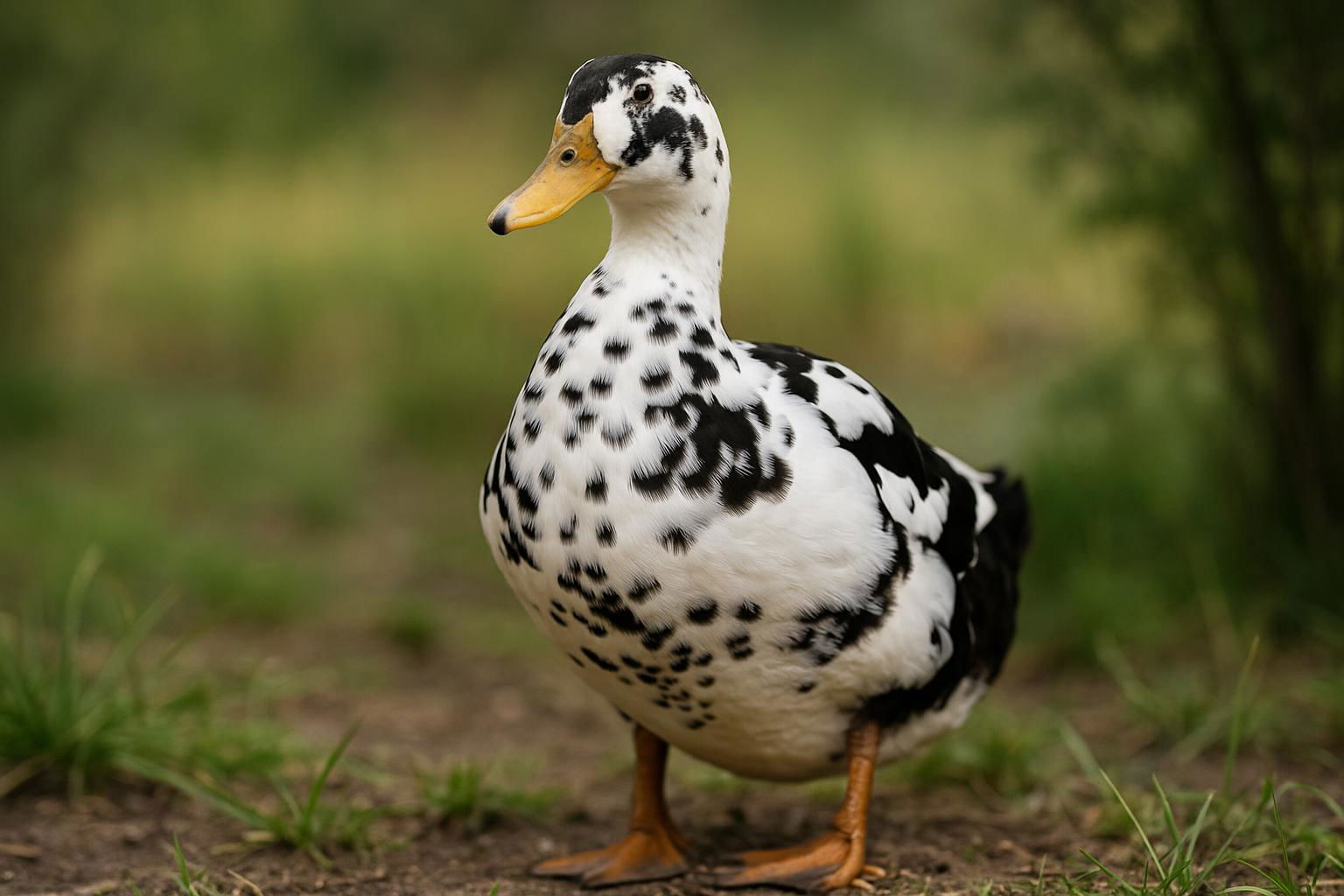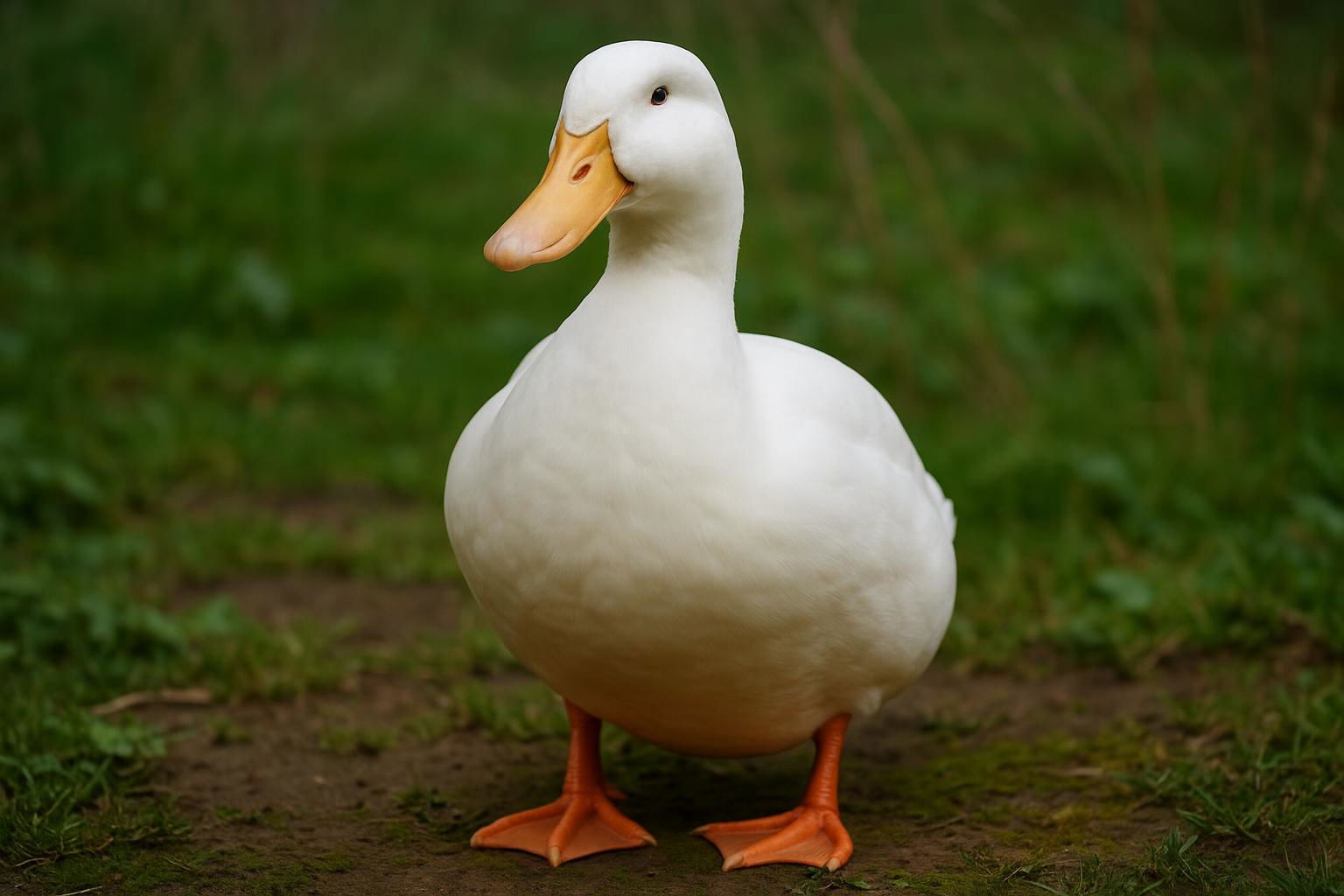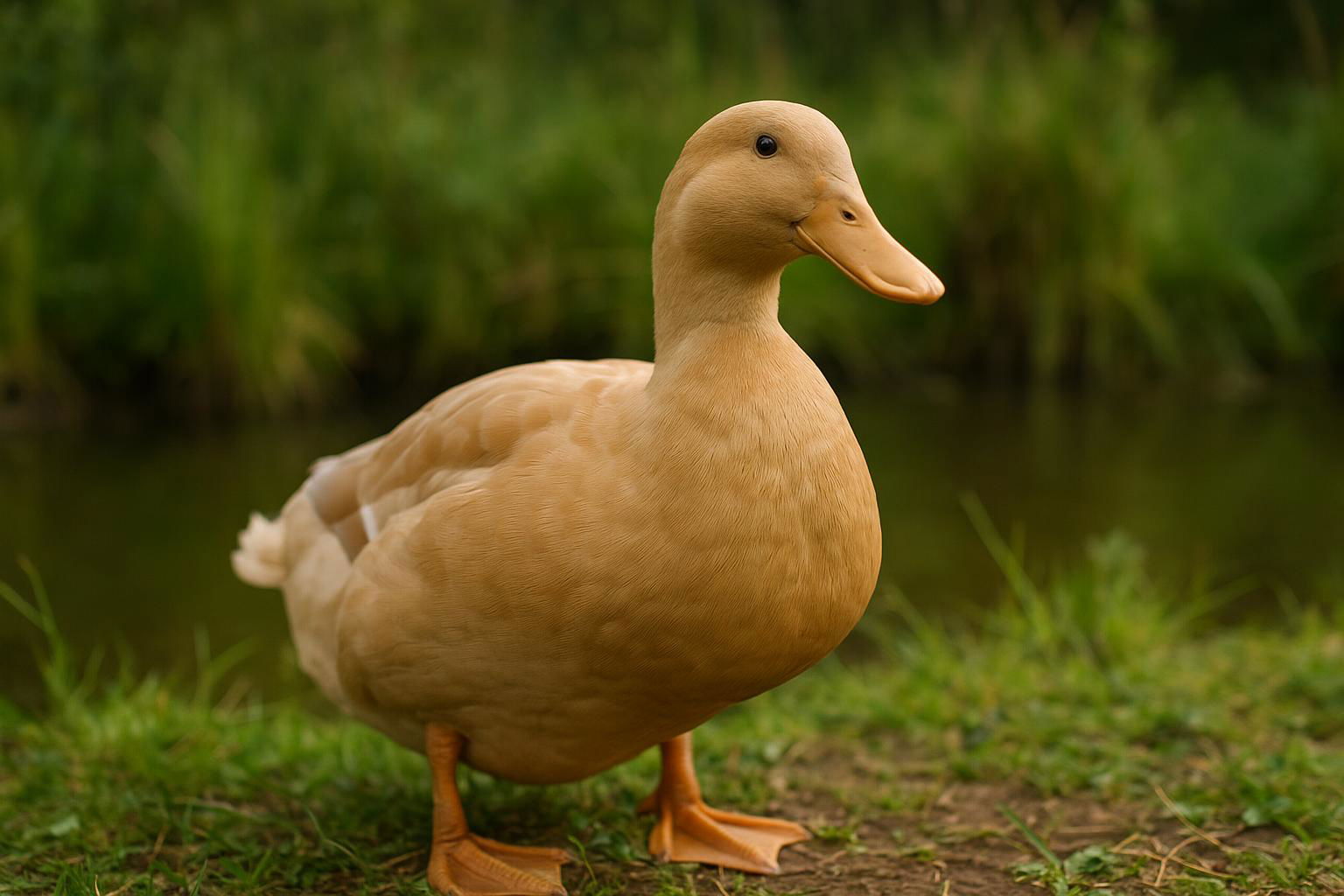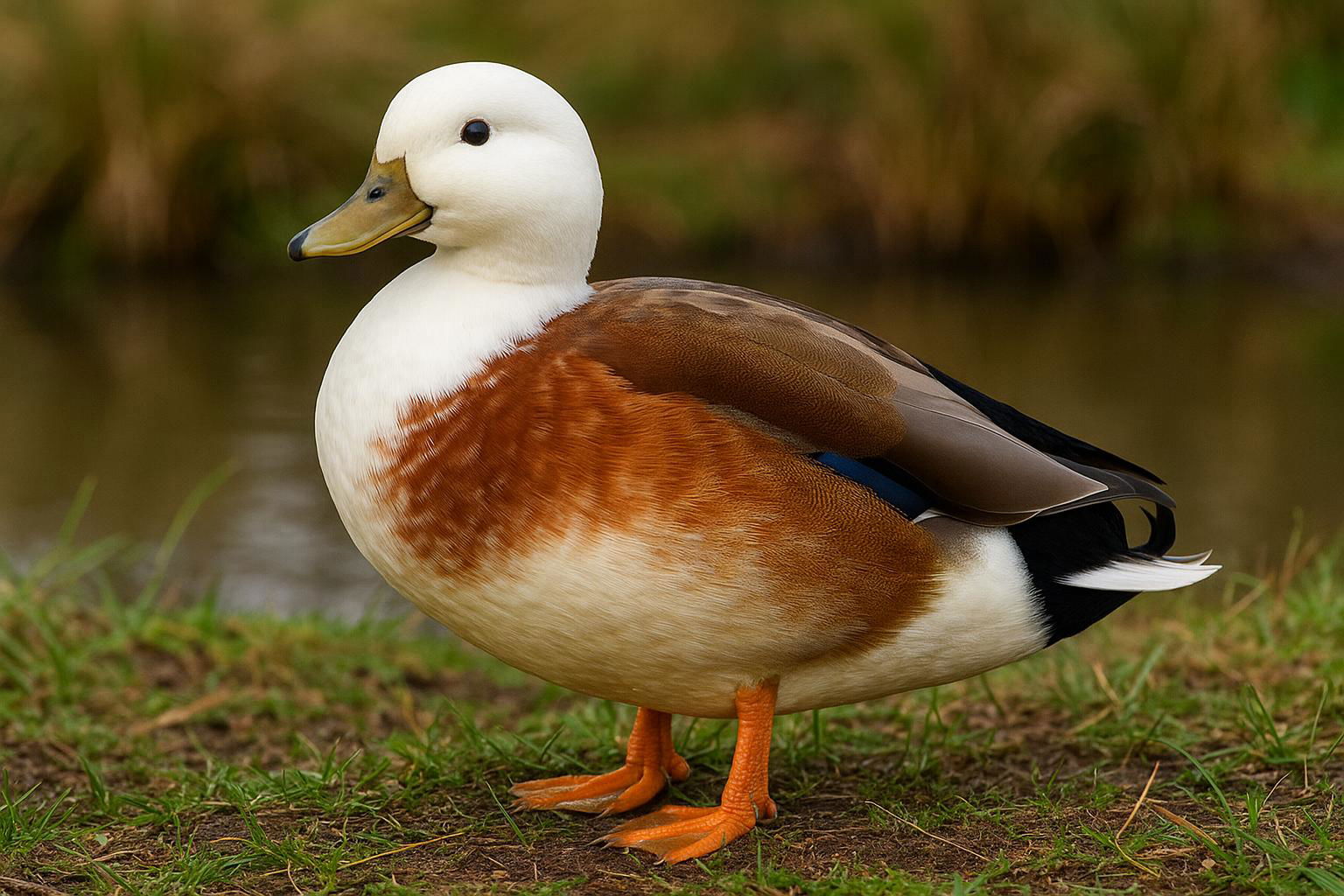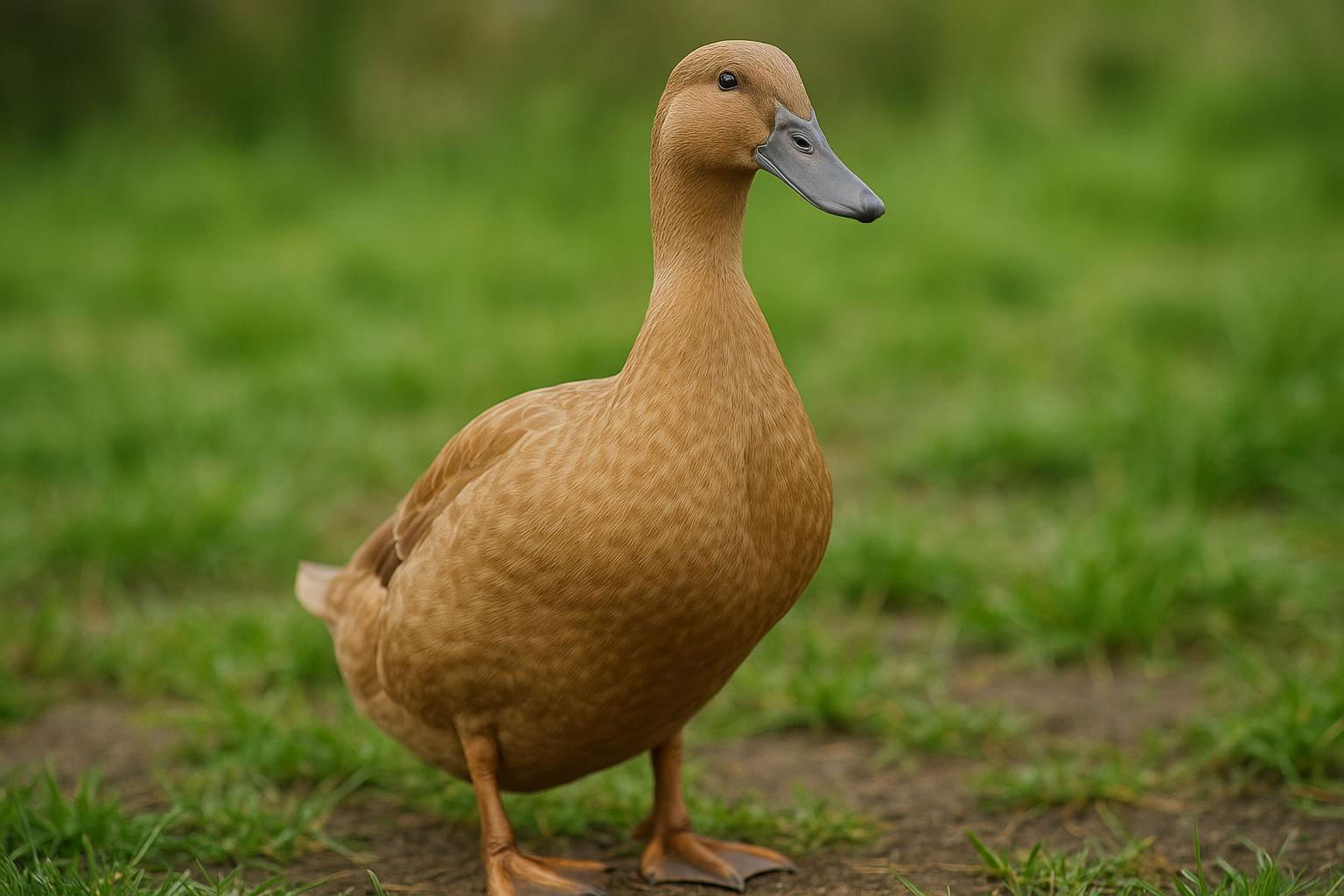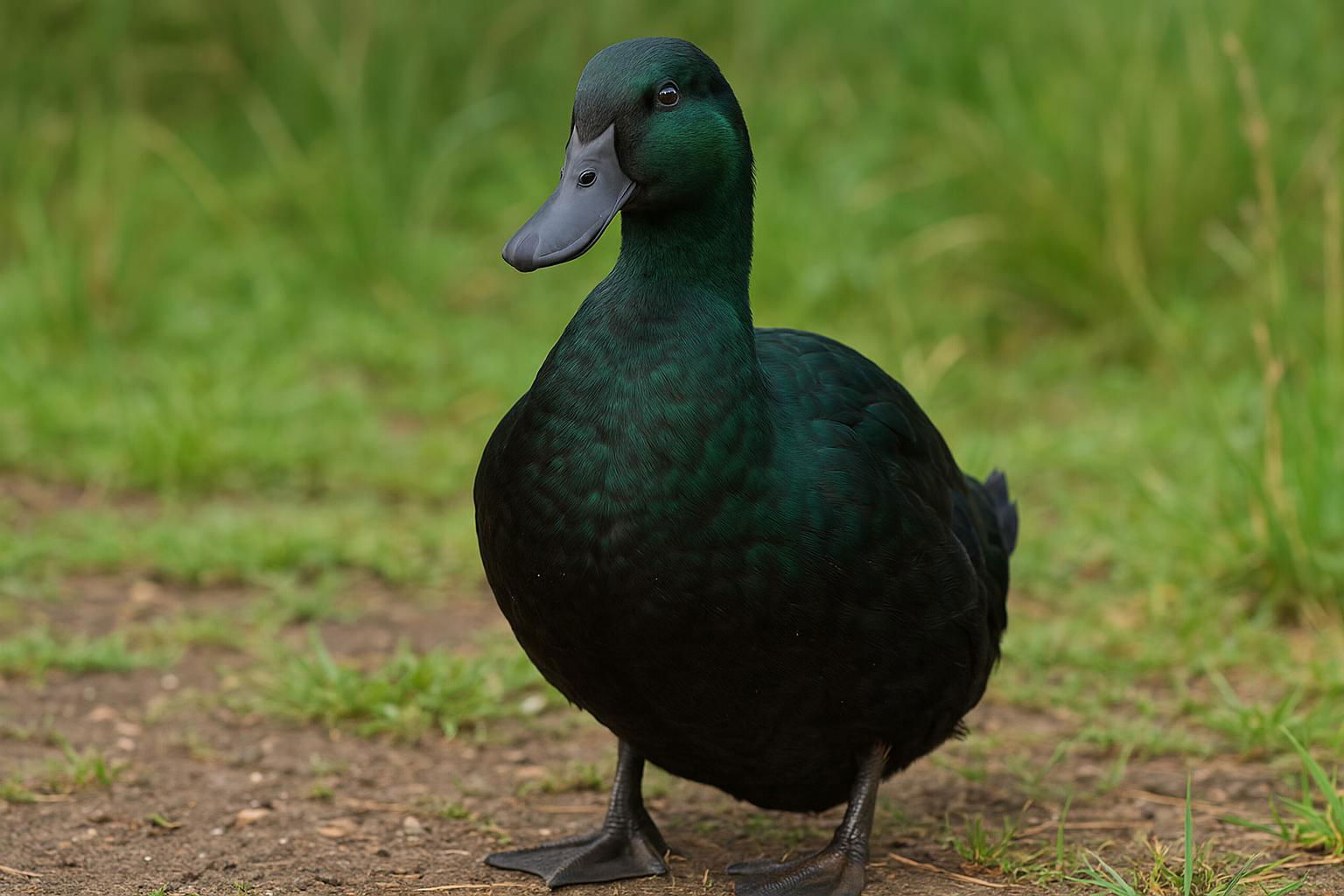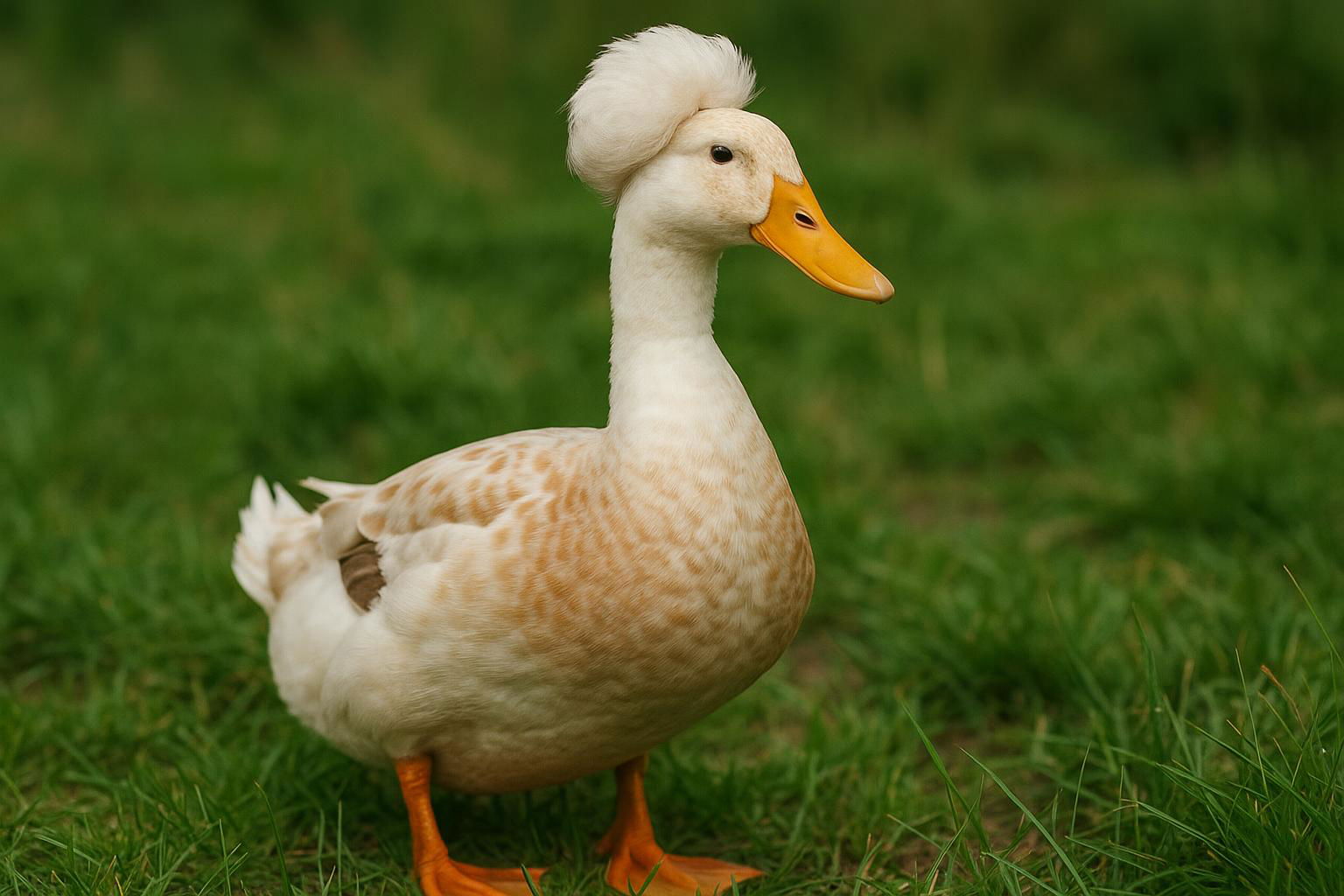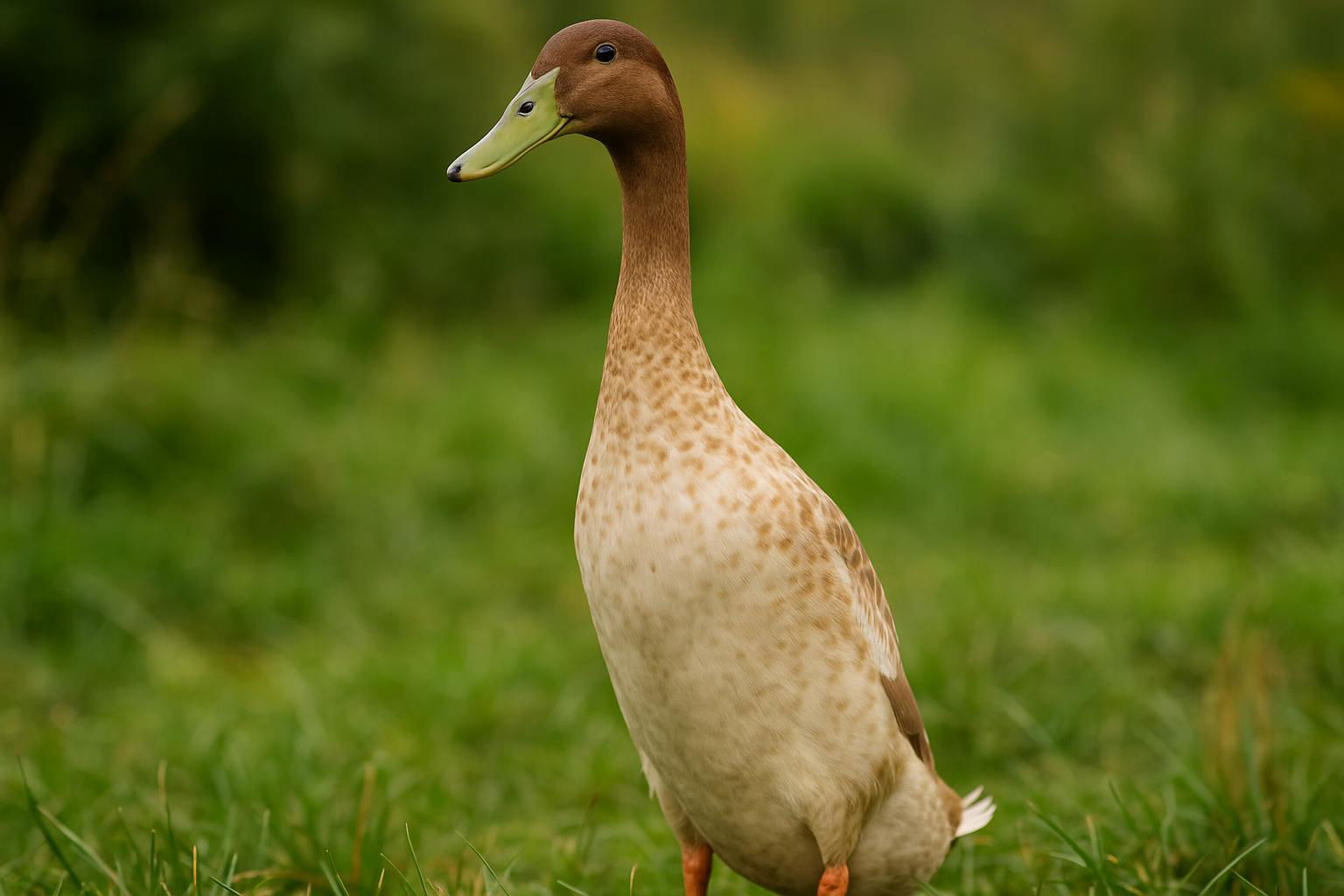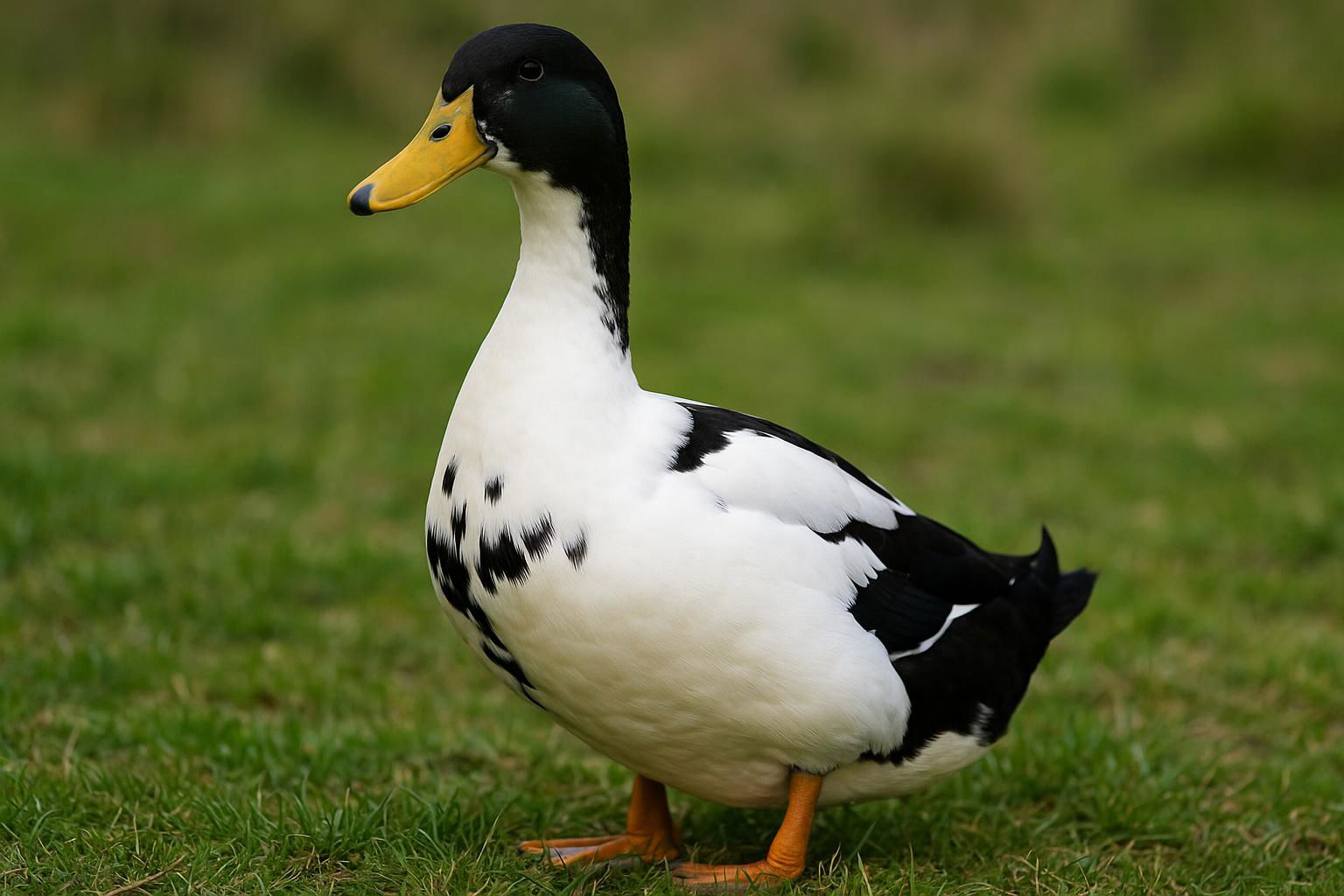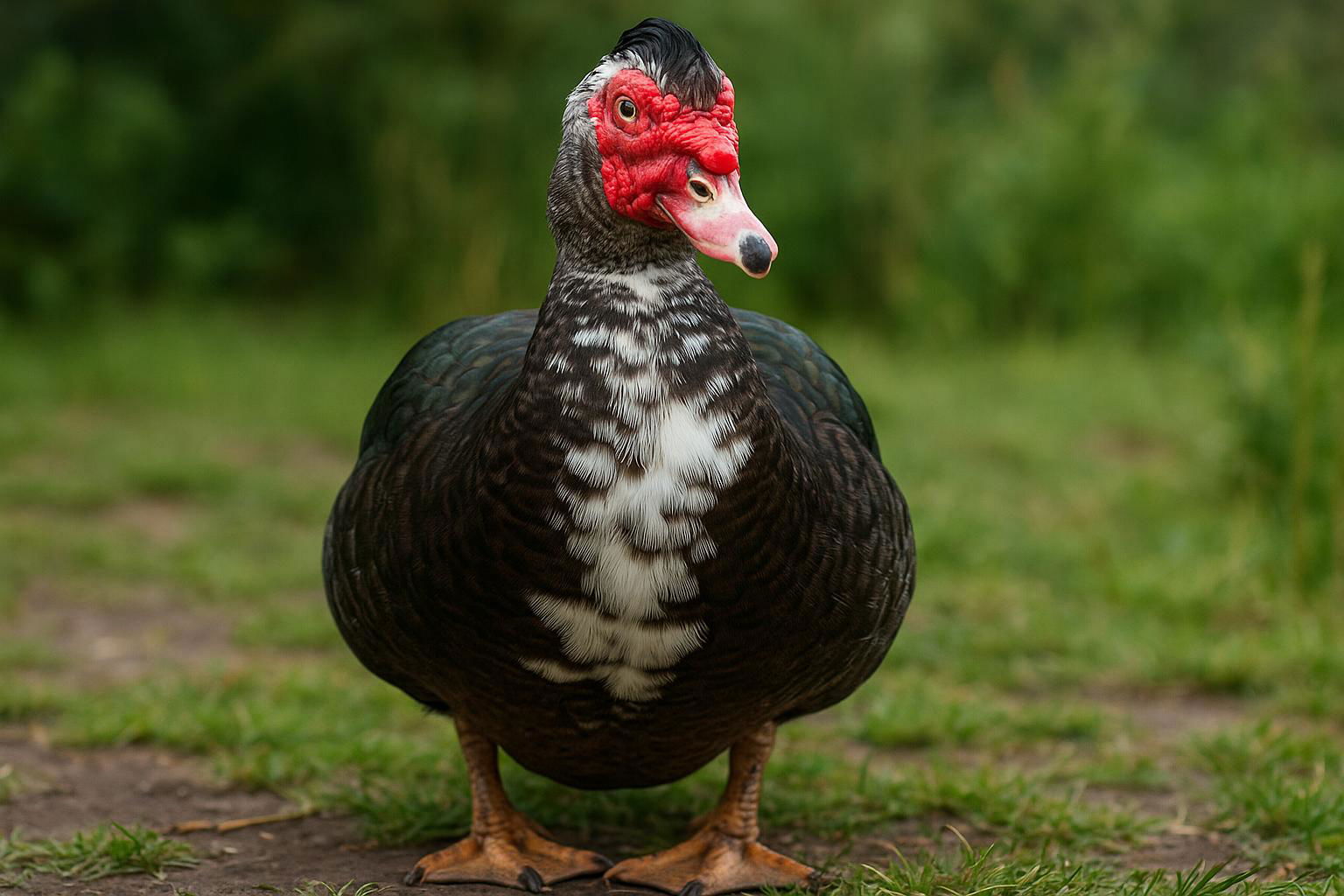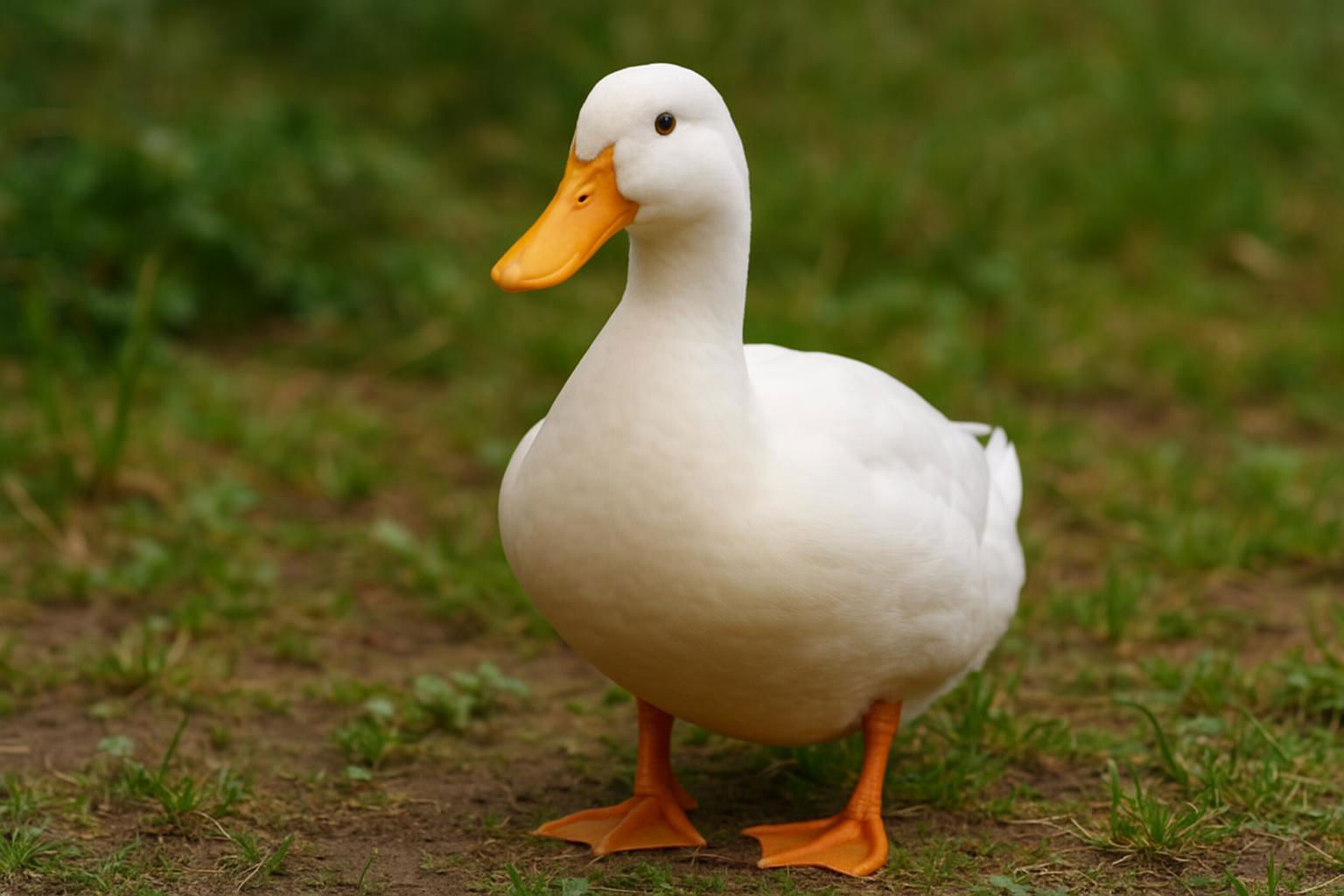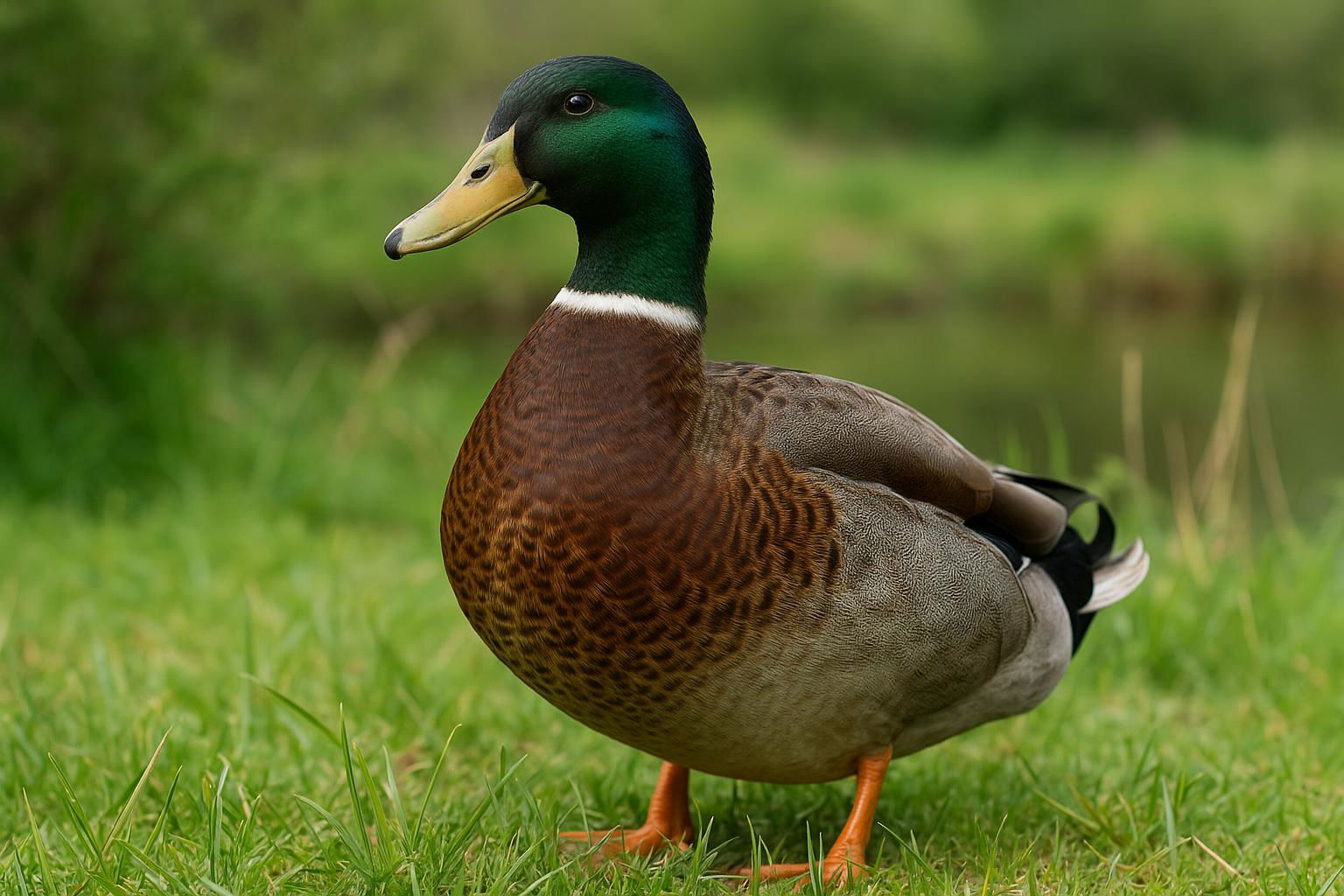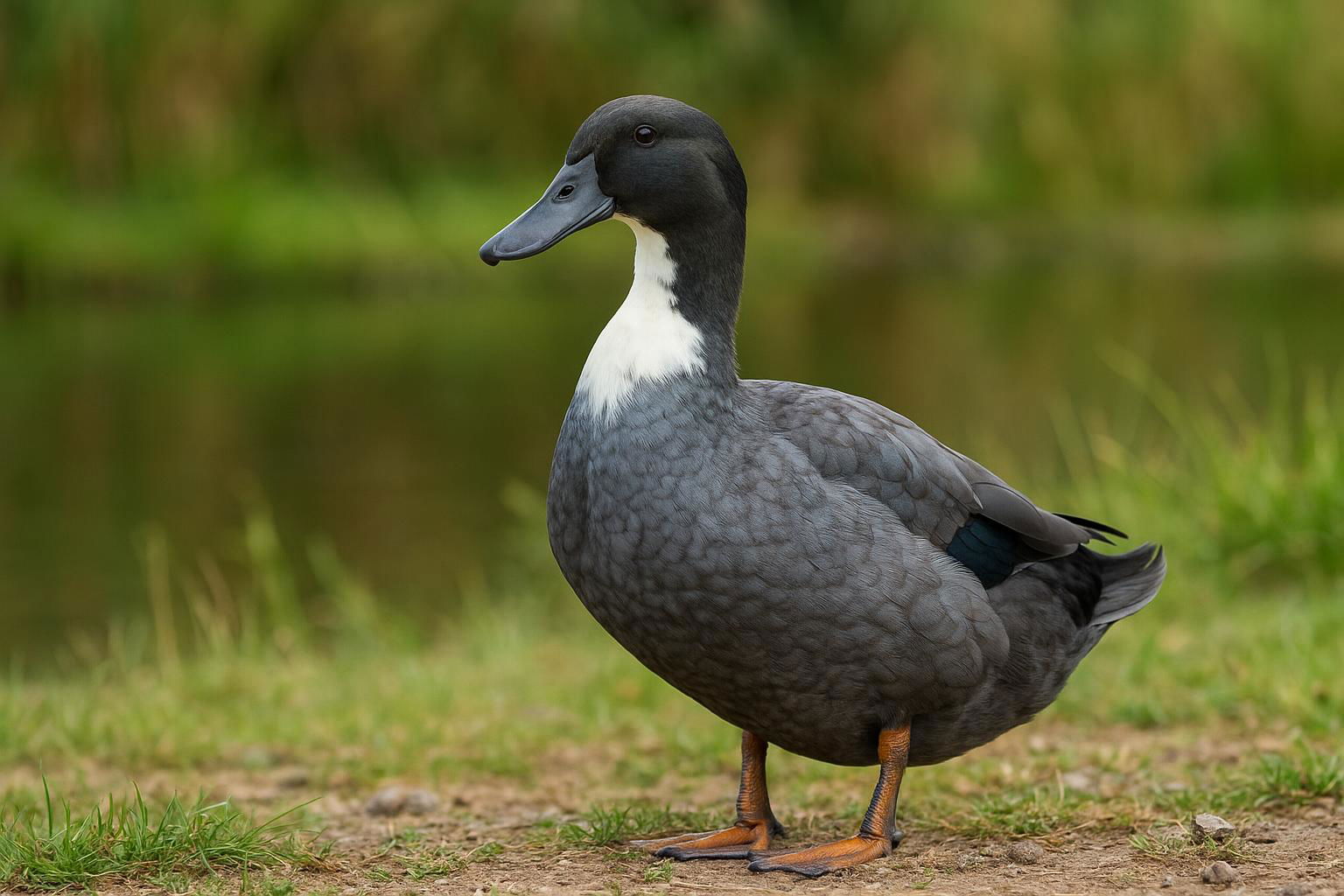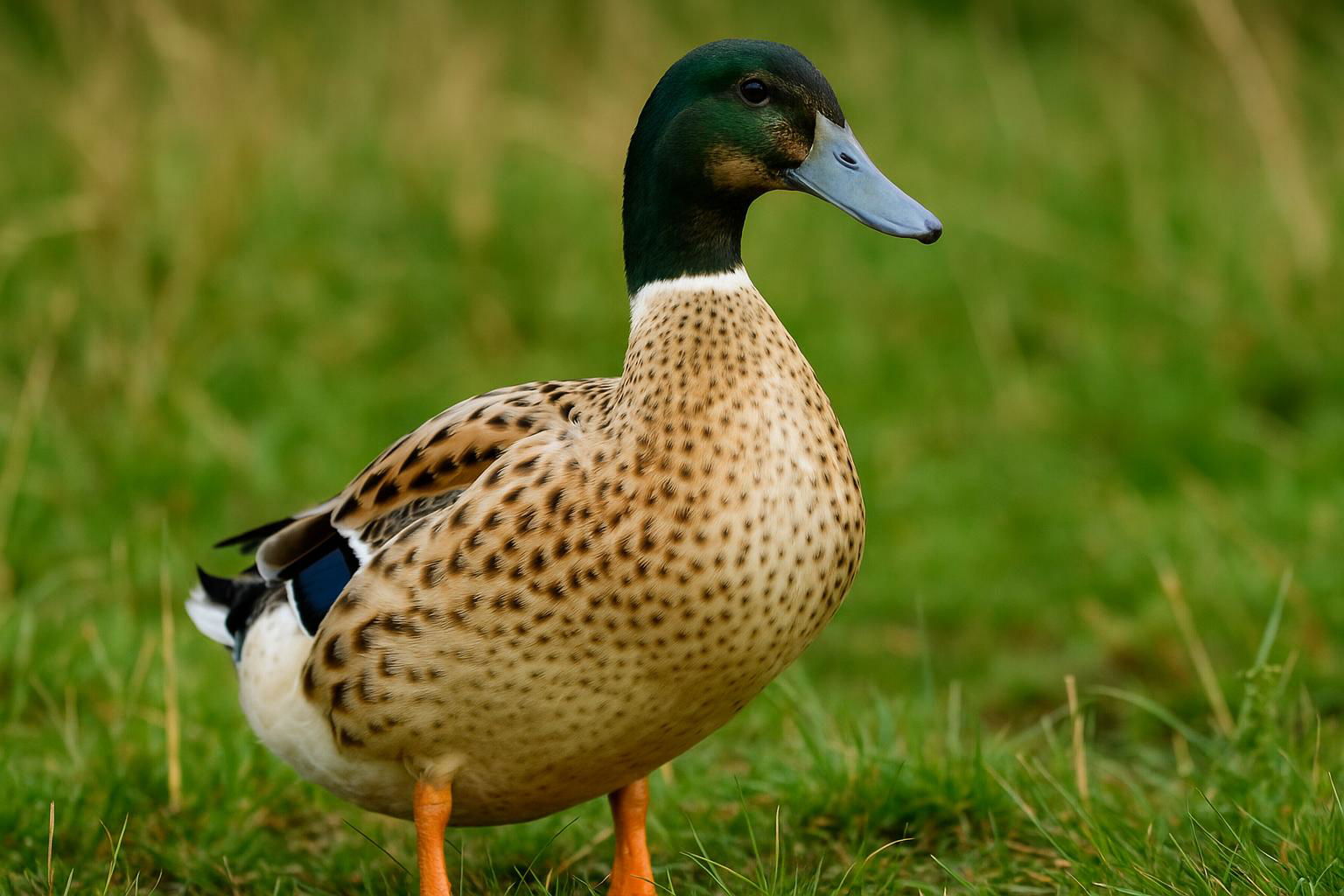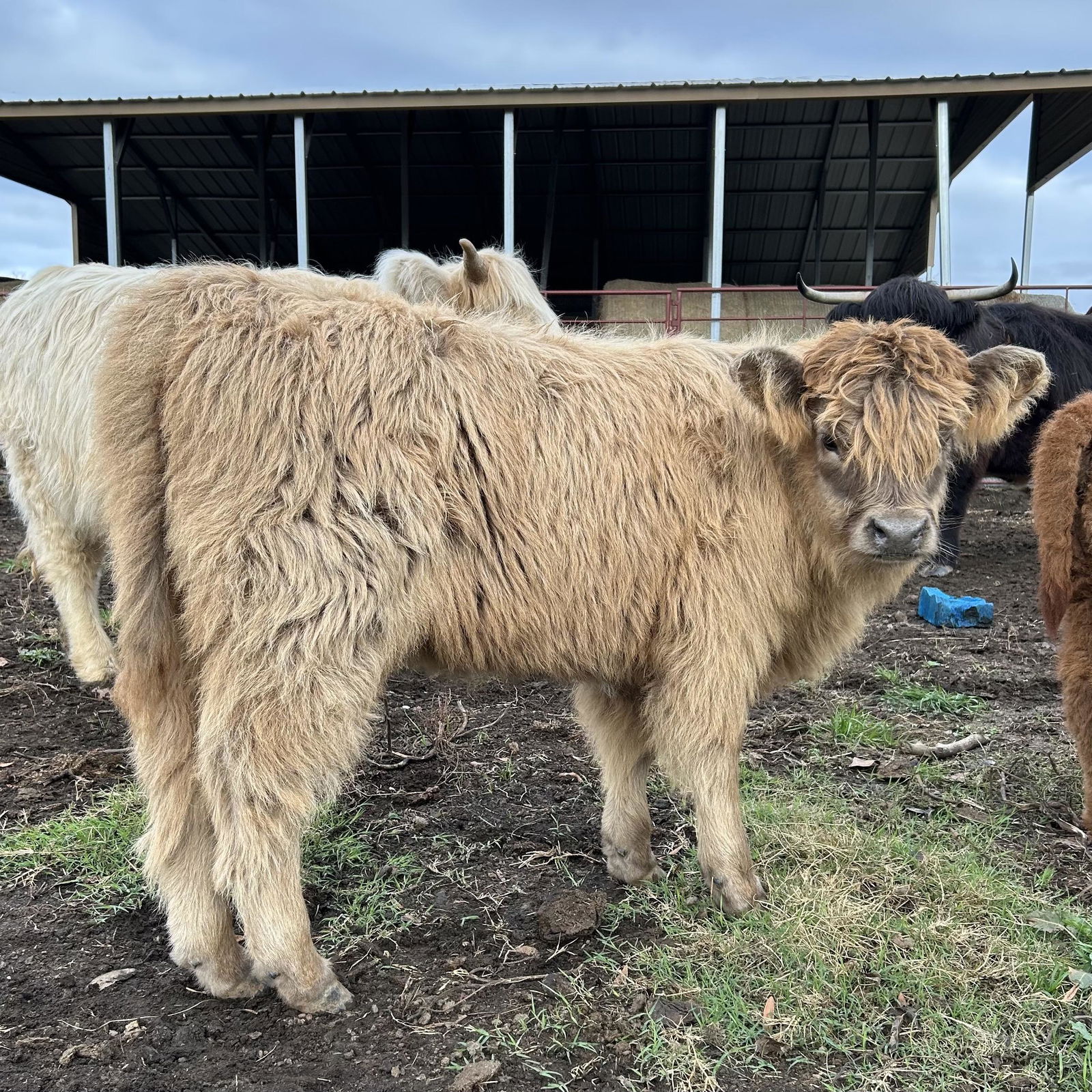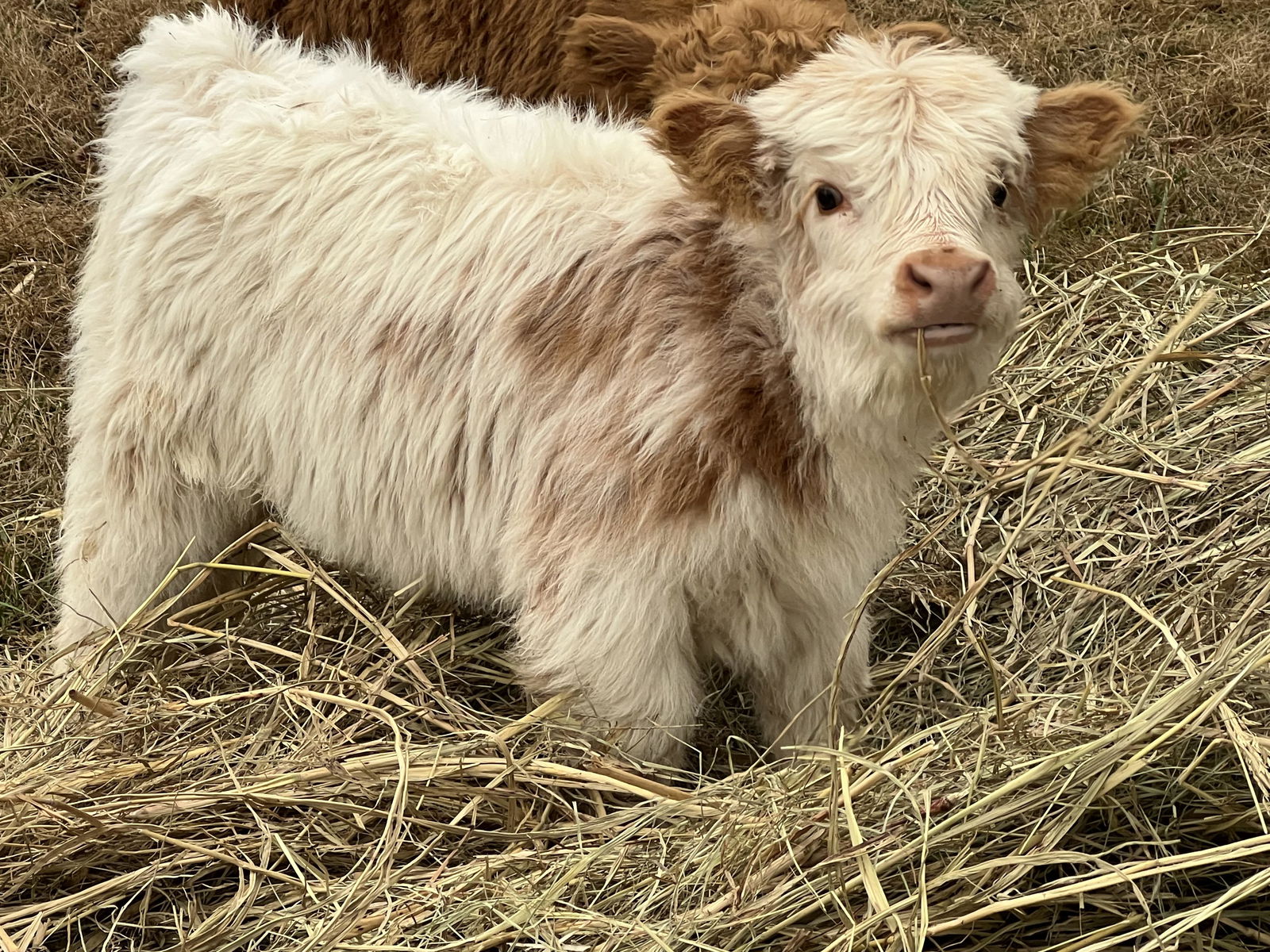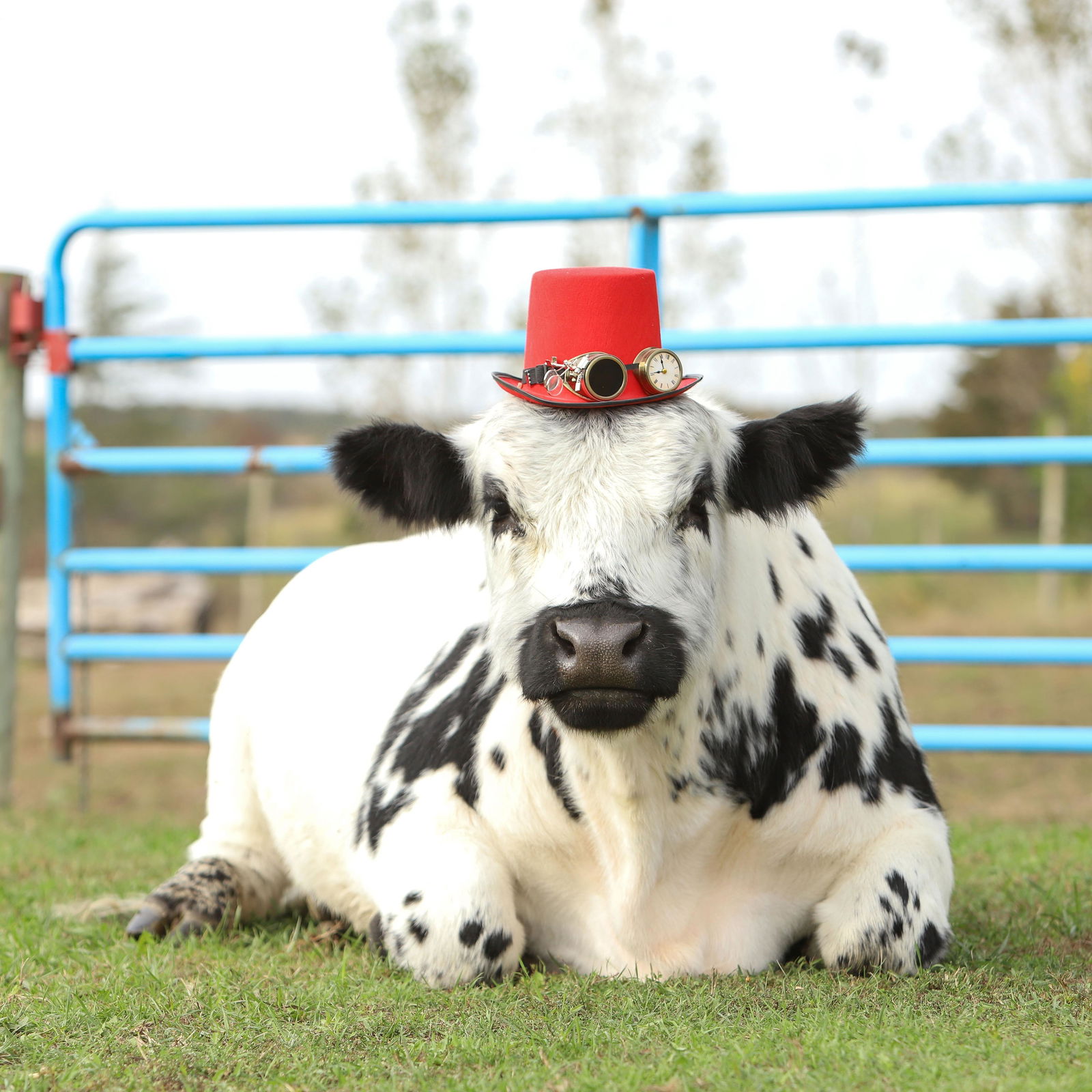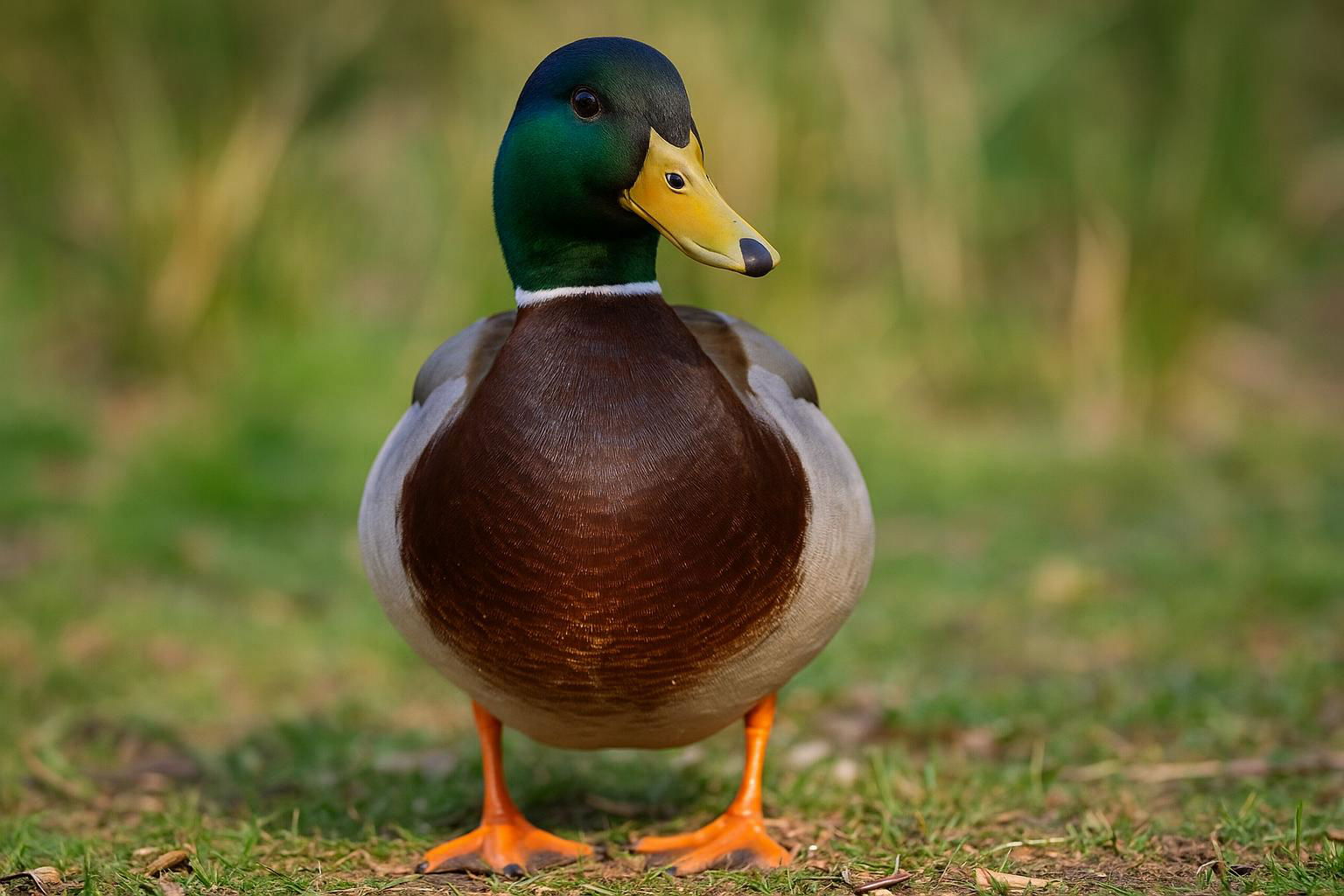
Mallard
The Mallard is a highly recognizable and widespread breed of duck, celebrated for its striking appearance and adaptability to various environments. Males, or drakes, are particularly eye-catching, with their iridescent green heads, glossy purple-brown chests, and distinctive white neck ring. Females sport a more subdued plumage, predominantly mottled brown, which provides excellent camouflage. Mallards are medium-sized ducks, with a length ranging from 20 to 26 inches and a wingspan of about 32 to 39 inches.
Known for their versatility, Mallards are found in a wide array of habitats, including freshwater lakes, rivers, marshes, and even urban parks. They are well-adapted to both wild and human-influenced landscapes. Social and gregarious, these ducks are often seen in groups and can be quite vocal, with their characteristic quack known to many.
Mallards are omnivorous, with a diet comprising aquatic vegetation, insects, small fish, and grain. They are dabbling ducks, typically feeding by tipping forward in the water rather than diving. This breed has a strong migratory instinct, with northern populations traveling long distances to winter in warmer climates.
Beyond their natural settings, Mallards have been domesticated and are ancestors to several domestic duck breeds. Their ability to hybridize with other species adds to their ecological significance, making them a focal point for studies on waterfowl adaptability and conservation.
Colors: Mallard Pattern

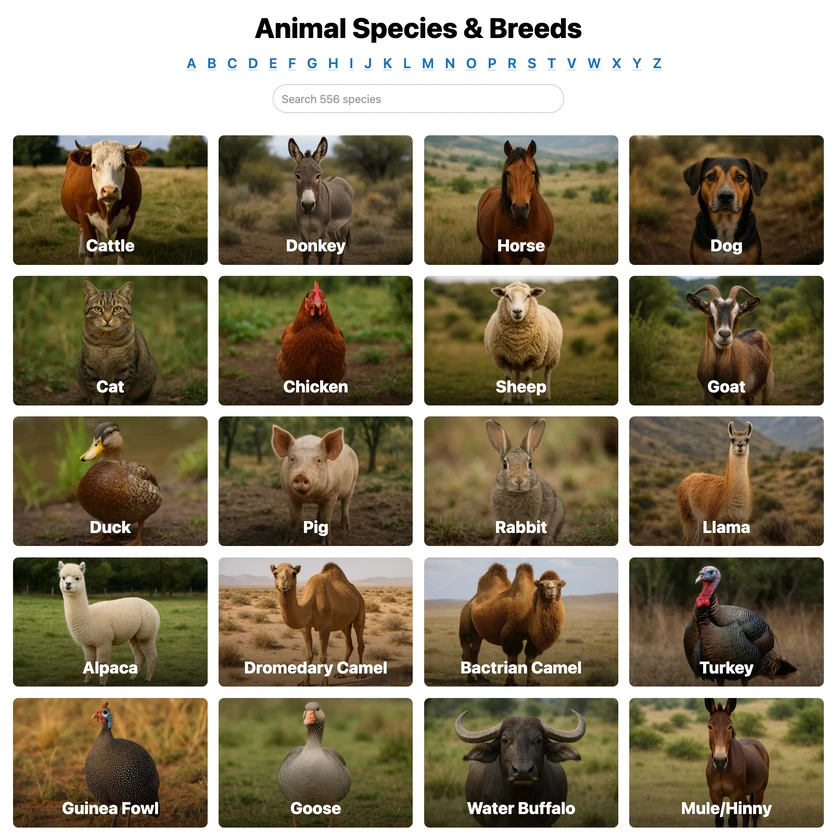 All Species & Breeds
All Species & Breeds
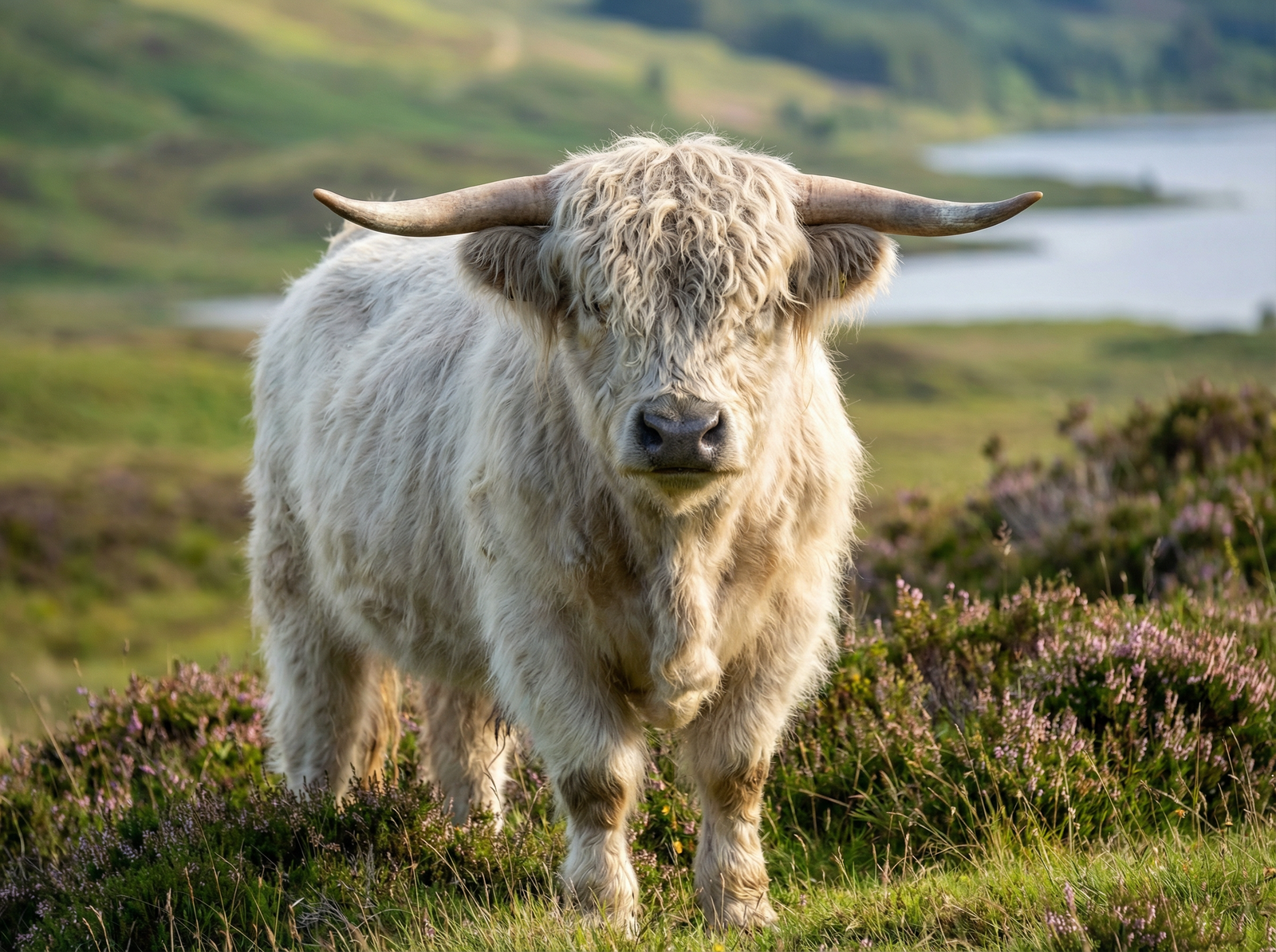 Highland Cattle
Highland Cattle
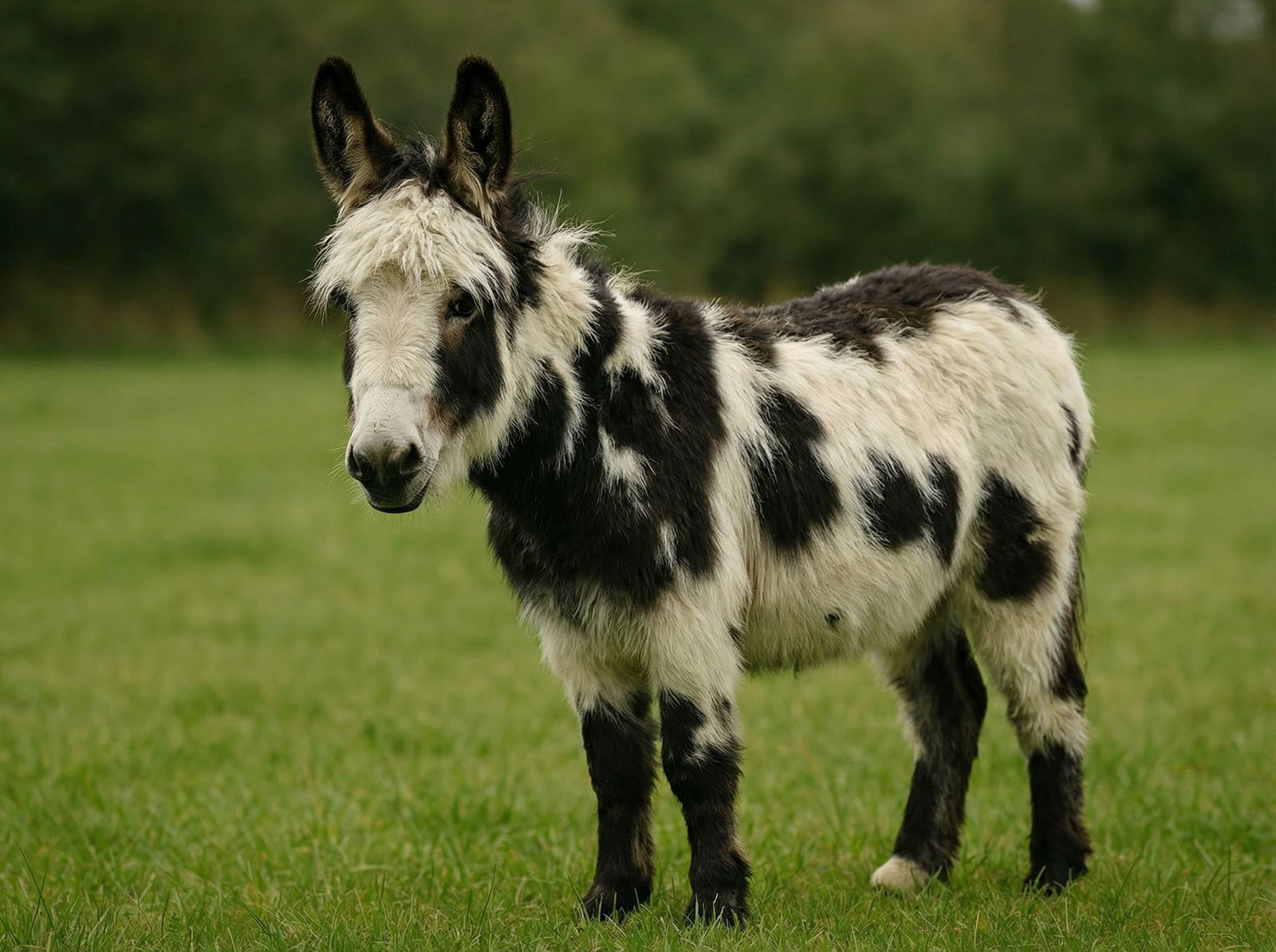 Miniature Donkeys
Miniature Donkeys
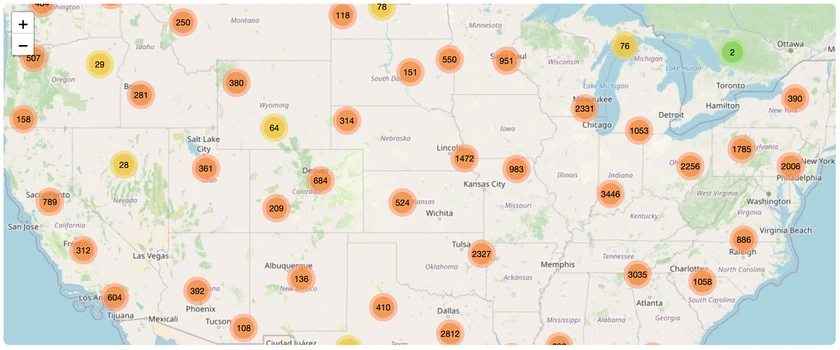 All Species Directory
All Species Directory
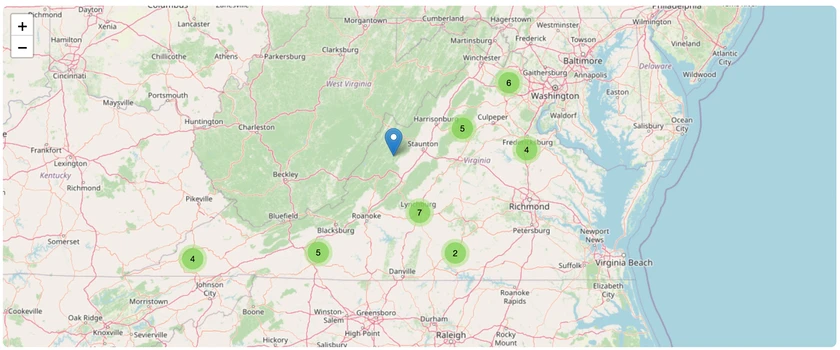 Highland Cattle in Virginia
Highland Cattle in Virginia
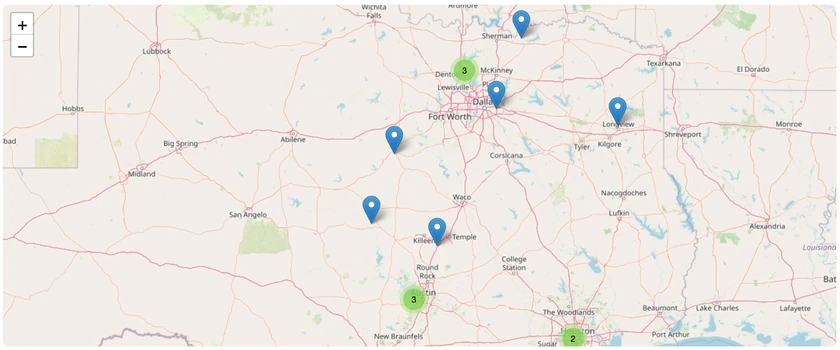 Miniature Donkeys in Texas
Miniature Donkeys in Texas
